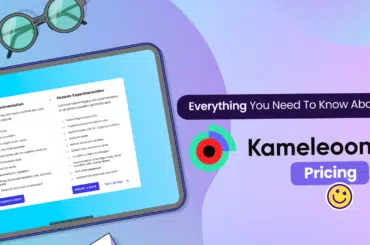What do you know about A/B testing?
If you know nothing about A/B testing then that’s fine
Let’s walk through a scene that’ll help you understand more about A/B testing, okay?
You’re walking down the aisle of a supermarket, and you see 2 almost identical ketchup bottles.
They’re very similar to each other with a slight difference in shape.
You pick one and leave, then another customer does the same, then hundreds then thousands
At the end of the month, the company selling those ketchup analyze which bottle sold more.
And they declare a winner, that’s pretty much A/B testing in a nutshell.

It’s putting 2 variations of the same product/page/website competing against each other to see which one performs better.
But you run the test on the same URL, here I’ll give you an example…
We want to run an A/B test on our heatmap tool page.
We prepare our copy and run the test, both A and B variants show on the same URL which is https://www.figpii.com/heatmaps
Keep that in mind because it’ll become in handy when we talk about split URL testing.
In the digital world that happens on the same page through some fancy code.
But before we jump onto split testing, I wanted to answer a few questions, first of them is why.
Why do companies do A/B testing in the first place?

Well, the answer is pretty simple, they want more conversions.
But how is A/B testing going to drive them more conversions? Let’s test that, shall we?
We’ll use FigPii as an example, we have 2 copies that we want to know which one performs better as a landing page copy.
So we log into FigPii, open the A/B testing tab and configure everything up.
So what should we A/B test?
What should you test?

Here are a few options…
1. Your landing page headline
This is one of the most important elements of your landing page.
The goal here is to either convey the benefits and/or the value proposition of what you offer or focus on a specific product benefit.
2. Your website navigation
This part is often overlooked and yet adds significant value when done correctly.
It improves conversion by making it easier for users to find their way around.
The navigation should be easy to understand, the text should be consistent throughout all pages (e.g., – upper-case or sentence case), no more than 2 levels deep, etc.
3. Colors and graphics
When testing color variations, you have to consider both variations in hue and saturation. You can also test in background images, but this will require a lot of traffic to get reliable results.
4. Call-to-action buttons
These are often the main focus on the landing page and so it makes sense to test them in order to determine which color, contrast, or shape draws your visitors’ attention most effectively. Remember that red is the power color when it comes to CTA buttons.
But you can also consider testing bold fonts, white font on a dark background, etc.
There is no one-size-fits-all solution here!
5. Forms
You should always A/B test the fields in the form you’re asking users for their information in. By simply reducing text input fields (email, phone number), you will simplify their experience and improve conversion rates because you won’t have to force users to input an email they are not interested in.
Then the next question is when.
When should you A/B test your website?

As soon as possible!
Now, more than ever, it’s so cheap to run A/B tests on your website.
Finding the right tool is key here because you don’t want to spend more money on testing than what you’re gaining out of it!
That said, A/B testing takes time – usually, more traffic is needed to get accurate results.
A/B testing is about changes, so if you’re about to change anything on your website, it’s much smarter to test it first.
A new layout, a new design, feature, pricing.
Whatever it’s, you can’t be 100% sure that moving in one direction going to increase your revenue unless you A/B test to be sure.
Sometimes you think you’re changing into a winner variant but results disagree.
What is a split test anyway?
Glad you asked, here’s what it is…
What’s a Split URL Testing?
A split URL test is a normal A/B test that you run on 2 different URLs
You are testing the same webpage, CTA, design, etc. but on 2 different URLs.
So if you go back to the example I gave at the beginning of the blog our heat mapping tool one you’ll recognize the difference.
One test would be run on https://www.figpii.com/heatmaps
While the other would be run on https://www.figpii.com/heatmaps-2 (for an example)
Now that you know what’s a split URL test is, let’s talk about why should companies care about it.
Why should companies care about split URL testing?

Usually, it’s suggested that any A/B tests you have in mind be run with a normal A/B testing method and not a split test.
But there are a few cases where a split test can be quite useful.
One of those is when you want to improve an existing landing page that gets a lot of traffic but just doesn’t convert as it should.
In this case, using separate pages for each variation will help you determine which one performs better without losing traffic from your main page.
Another reason is if you want to update some features on your website and don’t want the old ones to disappear completely (for example, keep them accessible through different URLs).
It also can be helpful in testing new features or pages like holiday landing pages or thank-you pages that usually get lower traffic than the main ones.
In any case, it’s important to keep a consistent design and messaging between the two pages in order to get useful results.
Split URL testing is a method that should be used only when the alternative methods won’t work or aren’t efficient enough.
It can be extremely useful for companies who want to improve their existing landing page without losing traffic from it.
My thoughts?
I’d suggest you keep to regular A/B testing for most of the tests that you’d usually run on your website.
If it’s just a small change in design, layout, or CTA then A/B testing will be more than sufficient for your needs at that given time.
But if you want to test a completely different design, a new feature, or a new tech stack then it’s crucial that you use split testing.
If you are looking for an A/B testing platform then you’re in luck!
FigPii is a CRO platform that offers A/B testing as a part of its subscription.
We offer both normal and split URL testing so we’ve got you covered.
Feel free to try out the platform for yourself and let’s know if you need anything.
Till next one.



